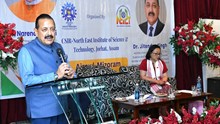
Every year, billions of tonnes of topsoil are lost due to overgrazing, deforestation, pollution, and other human-induced threats. This alarming trend jeopardizes the foundation of our food systems, the Earth's carbon cycle, and the habitat of nearly 60% of the planet's species, according to a study in Nature. As soil degradation accelerates, global food security, biodiversity, and climate goals face unprecedented risks.
Soil health took center stage at the 16th Conference of the Parties (COP16) to the UN Convention to Combat Desertification (UNCCD) in Riyadh, Saudi Arabia. World leaders discussed measures to combat soil loss and pledged to achieve land degradation neutrality by 2030. As we recently marked World Soil Day, it’s crucial to understand the causes of declining soil health and explore viable solutions to address this crisis.
1. Drought
With over one-third of the global population living in water-scarce areas, drought is a significant driver of soil degradation. The inability of degraded soil to retain water increases vegetation loss, leading to further drought and erosion. This problem is particularly acute in Sub-Saharan Africa, where food insecurity and famine are becoming more frequent.
Water management practices, such as drip irrigation and rainwater harvesting, coupled with ecosystem restoration, can help communities retain soil moisture. These methods not only combat drought but also promote vegetation regrowth and enhance soil resilience.
2. Land Degradation
Over 70% of Earth's land has been altered by human activity, including deforestation, overgrazing, and urbanization. This widespread disruption diminishes soil fertility, reduces agricultural yields, and poses a grave threat to food security. Climate change-induced extreme weather events, such as alternating heavy rains and droughts, further accelerate land degradation.
To combat degradation, farmers can adopt conservation agriculture, including the use of compost, mulching, and organic matter to enrich soil nutrients. Improved irrigation techniques and sustainable land management practices can also restore soil health, preventing further damage.
3. Industrial Farming
Industrial farming, while effective at producing large quantities of food, causes significant harm to the soil. Heavy machinery, monocropping, and excessive pesticide and fertilizer use degrade soil structure, reduce biodiversity, and pollute water sources. This farming method is also responsible for about 22% of global greenhouse gas emissions.
Sustainable practices like zero-tillage, crop diversification, and integrating trees into farming systems can mitigate the negative impacts of industrial agriculture. The “forest garden” model, increasingly adopted in Africa, combines trees and shrubs with crops to build soil fertility and boost smallholder yields.
4. Chemicals and Pollution
Soil pollution, caused by industrial processes, mining, and unsustainable agricultural practices, disrupts ecosystems and harms human health. Chemicals like synthetic fertilizers, pesticides, and heavy metals damage soil organisms, impair nutrient cycling, and contaminate food sources.
Minimizing chemical inputs, promoting organic farming, and implementing strict waste management policies can reduce soil pollution. Restoring polluted soils through bioremediation and reintroducing beneficial microorganisms can also rejuvenate their vitality.
5. Diet and Nutrition
Current dietary patterns, dominated by staple crops like wheat, corn, and rice, encourage monoculture farming, which depletes soil nutrients and promotes erosion. Diets high in animal products, especially beef, exacerbate soil degradation through overgrazing and land conversion for feed crops.
Transitioning to diverse, plant-based diets can reduce the demand for intensive monoculture farming. Aligning agricultural practices with sustainable dietary choices will not only enhance soil health but also ensure long-term food security.
The world’s soil is in danger, and failing to act could have serious consequences. Protecting this essential resource requires a collective effort from governments, communities, and individuals. By adopting sustainable farming practices, restoring ecosystems, and making mindful dietary choices, we can reverse soil degradation and ensure a healthier future for our planet.
















